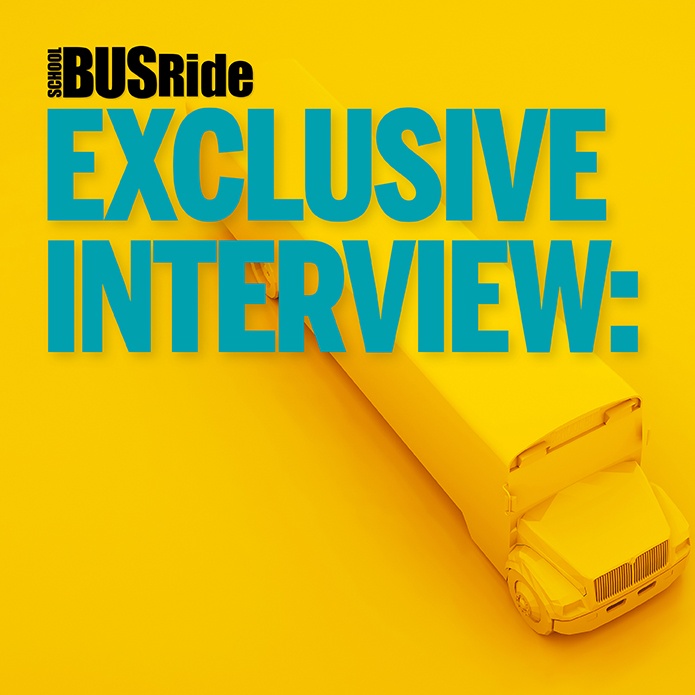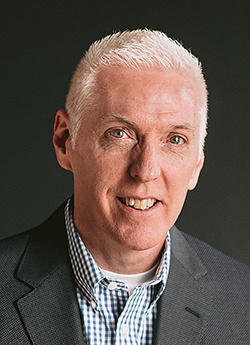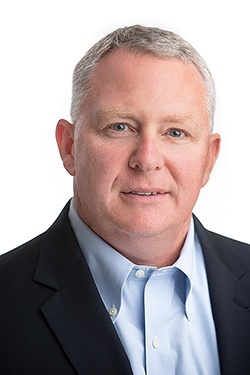
School BUSRide recently spoke with Mike Martin, executive director of NAPT, and Tim Ammon, co-founder of Decision Support Group. The following dialogue that occurred last month between these co-hosts of the Push 2 Talk podcast explores the effects of President Biden’s vaccine mandate on pupil transportation, various roles of alternative student transportation, and the fatigue which the last two years have placed on members of our industry.
The Occupational Safety and Health Administration (OSHA) has suspended enforcement of President Biden’s vaccine mandate after a federal court of appeals blocked the executive order. What are the implications for student transportation?

Mike Martin: The general push thus far has been to encourage as many people as possible to get vaccinated. The Executive Order imposed a specific requirement on employers, including school systems and their private sector school transportation service providers, to require their employees to get vaccinated. The fact that the court of appeals for the fifth circuit ordered OSHA to take no steps to implement or enforce the vaccine mandate until further court order seems definitive. But, it was a circuit court decision. It wasn’t the US Supreme Court. If the decision is appealed, and I think it will be appealed, that makes this interim period a lot like waiting for the other shoe to drop.
Tim Ammon: Regardless of what you or an employer might think about the mandate, what it certainly does is create continued uncertainty about what might happen, which does not help any of the critical functions school transporters must address.

It does not help the recruiting function because you don’t know what to tell people. It does not help with the supply chain side of things because your vendors are equally as uncertain. It does not help with customer communication in terms of cost or contract negotiations.
I think the most understated, under talked about and most important element of this is that it is going to introduce a bunch of additional costs. This will be a problem because it is not as though we have tons of flexibility in the appropriation and allocation schedules that public entities work with. If what this does is introduce a 20 percent cost increase, nine months from now, the appropriation has already been set so we have no flexibility to manage that. That ends up being a real challenge for organizations as we approach the budget planning process in January. How do we think about introducing these potential costs to the budget process? If we bet on the come that they are not going to happen, what happens if they do? How do we make sure we don’t get caught short? I see that as a huge problem.
Martin: We have heard various voices in the school of transportation market space, especially among those in the private sector, say that having a vaccine mandate has made it even more challenging to recruit and retain school bus drivers, that it’s exacerbated the shortage. That seems logical. Anything that creates friction in the recruitment and retention pipeline right now is going to viewed skeptically.
But remember, we have been dealing with the shortage of CDL license holders who are able and willing to drive a school bus for a really long time, like for the last 30 years, maybe even more. It’s not a new problem; it has just become more challenging. So, we have to realize that the things we have done in the past are probably not going to work as well now. We have to think differently.
One of the things NAPT has done via the NAPT Collaborative was to create a coalition among a dozen other K-12 associations, build consensus on some ideas, and then craft and send a letter to the U.S. Secretary of Transportation, Pete Buttigieg, proposing four specific things that we think would have a positive impact.
First, we suggested that DOT delay for one year the start date of their new entry level driver training regulations. They are set to take effect on February 7th, 2022. By our way of thinking, this is like adding fuel to a fire. Federal policy should be focused right now on eliminating barriers to driving school buses rather than imposing new ones. To us, delaying the new ELDT requirements would be a logical thing to do.
Secondly, we suggested that DOT modify entry level CDL requirements for school bus drivers.
When someone passes the CDL general knowledge test and gets a commercial learners permit (CLP), they are not permitted to take the CDL driving skills test for a minimum of 14 days. It doesn’t sound like a long time, but the reality is when you are looking to hire someone, telling them they have to wait a minimum of 14 days before they can start working is frustrating. So, we suggested cutting that time in half.
We also requested temporary authority to allow CLP holders to operate any school district approved vehicle that has a GVWR less than a traditional type C or D school bus without a CDL holder riding along.
The goal again is to give someone the opportunity to begin working immediately. The school system and its contract service provider would have to discuss and evaluate liability issues and risk management but that’s what they do, or should be doing, now anyway.
Our third proposal was to allow third parties to administer both the CDL knowledge and the skills test. Many DMVs were closed a long time last year and that created a variety of challenges at the entryway of the pipeline. Allowing third parties to administer both knowledge and skills tests does not mean that every state must allow that, but it would provide flexibility.
We also suggested extending the duration of the CLP from 180 days to one year, just in case we find ourselves in another situation when people can’t go to work, or the state DMVs are inaccessible.
The final suggestion was to provide a one-year exemption to the social security earnings limitation. Any retiree that collects social security payments before 67 is potentially going to see a reduction in their benefits if they earn more than $18,960 in any given year, which is a disincentive. We would rather incentivize them. If you can remove that potential penalty for people who are going to drive a school bus, then we might entice more people to come back to work.
Ammon: They strike me as all being of the same vein, which is this: so much of the regulatory infrastructure focuses on creating a barrier rather than an access point.
A huge amount of this regulatory infrastructure was built at a time where the resources and capabilities that exist right now did not previously exist. The regulations were created and adopted and then not readapted to anything else.
What can we do to explore creative alternatives for student transportation?
Martin: This is one of the things Tim and I have been discussing most in both our public and private conversations over the last 18 months. We have both talked to numerous local, state, and federal policy makers in the K-12 market space as well as dozens of education stakeholders in the private sector and have asked them, “What should we be thinking about?” and, “What should we be focused on to address the calls for change?” or, “To what extent do you think school systems should rely on yellow school buses, both now and in the future, as the primary way for students to get to and home from school?”
If we don’t lead the conversation about these issues, others are going to do it and we might not be happy with what they have to say.
Ammon: I am of the opinion that the idea that access to education is a single modal service is frankly just wrong. We talk about school buses and safety and that is fine, but then we put kids in cabs. We did that everywhere. There has been an underlying practicality to the actual day to day administration that may not have been fully in sync with the messaging that we were providing in the first place. My take is that acknowledging that it takes a village and that we need to be thinking more holistically about matching mission to capability, to resources, to source, is both inevitable and frankly required of people who are supposed to be leaders in the industry.
Martin: One of the things that is becoming more and more important in this overarching conversation is choice.
Part of that equation is the socioeconomic impact, especially the impact on low-income families. That is going to be a really important topic of conversation for us as an industry, for the NAPT Collaborative in particular, and for those of us who have these conversations in the hope of sparking local conversations.
Ammon: The titling aspect has always been enormously troubling to me. What we have advocated for in a number of instances with absolutely zero success is changing the role of “director of transportation” to “director of access to education.” The intent being that it would ensure that addressing the needs of the 50 percent of kids who don’t ride the bus are included in the job description. It forces you to broaden your perspective on mode and method in terms of how you get kids to the places they are supposed to go.
The mindset has to completely shift in terms of what is feasible and what is possible. I am hopeful that will drive the conversation. I would really like to see the folks we interact with being much more attentive to this question and the topic of access, rather than just transportation as a functional/utilitarian element of a school system.
Martin: Part of what we will be doing in the NAPT ACTS! Road Show that we are launching next March is having these kinds of conversations. What type of impact can school transportation professionals actually have on the choice that a parent makes regarding their child’s mode of transportation?
We have historically discussed the fact that a yellow school bus is the safest way to transport children. While that is still true, we have seen in the last two years that it seems to be somewhat less relevant to people outside of the market space, and outside of the industry itself. We have to reconnect the dots.
Ammon: What I think we should be doing is looking for pockets of kids that we should be transporting rather than drawing lines to figure out where we won’t transport kids.
It is that expectation of service provision to the underserved that is driving and fueling a lot of the creation of alternative service providers that are filling that gap that in the market. The fact that school districts are often not active participants in filling that gap is in part due to a massively misunderstood relationship between funding and eligibility. We often hear that eligibility boundaries are determined by the state, which is actually not an eligibility true in most instances. More often the boundaries the state establishes are related to who the state will provide funding for not who we can pick up.
Martin: Part of the benefit of creating that broader level coalition of school superintendents, school business officials, elementary and secondary principals, rural educators, and others is that there is an increasing awareness of some of those paradigms that need to shift and perceptions that need to change.
I don’t know how quickly we can make that happen, but if we can turn an entire fleet of diesel powered school buses to electric in less than a decade, it would seem to me that we should be able to make some progress in this area too.
How do we deal with the strain and the fatigue of what operations have experienced over the last two years?
Ammon: In other words: from a purely practical, leadership, and management perspective, how do we make sure that we are cognizant of burn out?
I am greatly concerned that the mental acuity of our folks on Thursday morning is very different than it is on Tuesday morning because of all the demands that are put on them. We expect them to make outstanding decisions all the time, yet we are not nearly as focused on what is required to ensure they are mentally ready to make those decisions.
Martin: Our friend Dennis Roche at Burbio brought this to the general world’s attention. They noticed a trend in schools taking mental health days. As of last week, they tracked closures affecting 769 school districts, which was up from 675 the week before, and that was the largest week over week increase since September.
I am interested to see how this trend plays out, especially from the school transportation standpoint. I think there is going to be an expectation among school administrators that while they are home the school transportation department is going to have some free time to address these problems. I would be very surprised if that happened.
It is also important to note, while we are, as always, micro focused on school transportation, this is something that is happening across the board. It doesn’t matter whether you are East Coast, West Coast or somewhere in between, there is, what some people have called, an unprecedented level of fatigue amongst staff. And by the same token, students are stressed out too.
Ammon: I think the pace of current expectations is unsustainable. I believe that it is going to be a huge problem for organizations, be they schools or businesses or transportation departments, organizations are going to have to reckon with this. And I don’t believe that we yet have the tools to address
the concerns.


